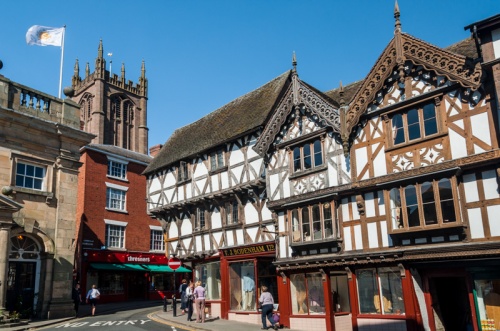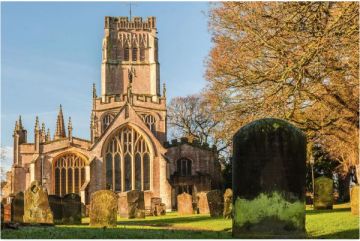
Visitors to Shropshire could be forgiven for rushing north through the county to medieval Shrewsbury, home to Brother Cadfael of literary fame. But if you think a mediaeval monk is all the county has to offer, think again!
Beginning in the south of Shropshire, the town of Ludlow is a deservedly popular destination. Its primary claim to fame rests on two buildings - one in superb condition, the other falling into a state of ruin. The former is the magnificent Feathers Hotel, a frequently photographed half-timbered inn which has welcomed guests since 1521. It is arguably the finest example of half-timbering in England.
The partial ruin is Ludlow Castle, the seat of the Lord President of the Marches until 1689. The castle was home to Princes Edward and Richard, sons of Edward IV.

The princes lived here until taken to the Tower of London and (perhaps) murder in 1483. In the summer, a Shakespeare festival takes over the town for two weeks, and plays are performed in the castle. In the grounds of the 12th-century church in Ludlow are the remains of poet A.E. Houseman, author of "A Shropshire Lad".
Moving north from Ludlow, at Stanton Lacy, the doorway of the little parish church contains one of the few recognisable examples of Saxon sculpture we can see today, and a little further on the small town of Aston Munslow is home to a country life museum covering eight centuries of Shropshire life.
If you are driving, take the B4371, a minor road which runs along the crest of Wenlock Edge. This high ridge provides lovely views across the Shropshire countryside. At the north end of the road is Much Wenlock, whose narrow streets are ringed by half-timbered buildings.
A highlight of Much Wenlock is the ruin of St. Milburga's Priory, originally founded in AD 680 by St. Milburga, grand-daughter of the pagan king Penda the Terrible. The priory was sacked by the Danes in the 9th century and later re-endowed by Lady Godiva (yes, THAT Lady Godiva). The buildings you can see today were built just after the Norman invasion in 1066.

Much Wenlock also houses a 16th-century guildhall, where you can see the whipping post and mobile stocks, last used in 1852. Swing south-east from Much Wenlock and you will soon reach Bridgnorth. Bridgnorth is unique in that it is divided into a Low Town and a High Town. The old town centre is in High Town, atop a 120-foot bluff so steep that a cliff railway is needed to bring visitors up.
In High Town are the ruins of Bridgnorth Castle, partly destroyed by Cromwell's troops in 1646. The castle keep now leans crazily to one side at an angle three times that of the more famous leaning tower at Pisa. The grounds of the castle are a public park once described by Charles I as "the fairest walk in my domain."
Bridgnorth is also home to the Severn Valley Railway, which operates steam trains on a 12 mile run to Bewdley during the summer months.
These are just a few of the highlights of the Shropshire countryside, and the locations listed should combine very nicely into a circular day drive.
Travel Resources:
Shropshire Travel and Tourism information
Shropshire Self-Catering Cottages

